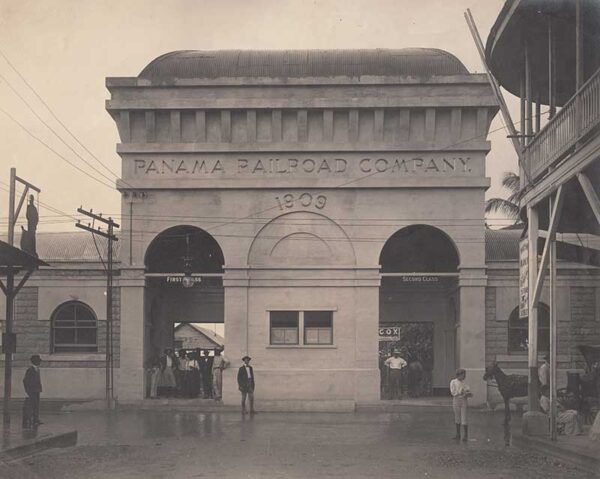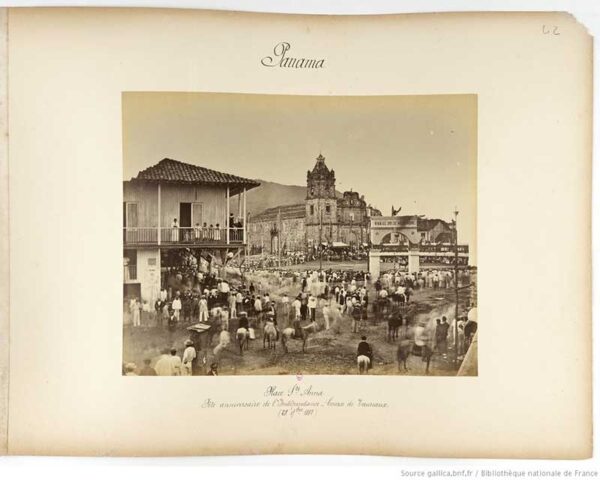Bicentennial and interoceanic communication
Why is the Bicentennial of Independence important and how is it related to the construction of the Canal? How is […]
Why is the Bicentennial of Independence important and how is it related to the construction of the Canal? How is the construction project of the route key to understanding current social processes? Has the Canal contributed to universal and global knowledge? To answer these questions, El Faro exposed throughout the year 2021, the local and global scope of the social, economic, political, cultural and scientific dimension in these contexts.
We have seen that the historical definition of interoceanic communication is indelibly linked to the 19th century. Therefore, a broad reflection was made on the projects that propitiated it and on how it promoted and contributed to the development of different aspects of universal knowledge. It also included how Panama and the Canal are key to understanding the scope and depth of the great technological changes that began in the 19th century.

This November 2021, it will be 200 years since we gained independence from the Spanish Crown and declared ourselves a free republic. Simon Bolivar’s vision and accession to Colombia included, within the scope of his vision, that Panama would be the site where communication between the seas would occur. Panama would follow its destiny as the route to communicate the seas in a global context, where communications are positioned next to the geopolitical interest of a colonial expansionism through a technological proposal, by the then world powers. France, England and the United States were the most important players in this context.
Panama’s previous condition with the Portobelo Fairs, the decadence of the cobblestone roads and the emerging multimodality of the Camino de Cruces, are the scenario in which independence is inserted.
That Panama is a stratified and caste society: a minority of Creoles and peninsulars, educated in power, and a great majority of slaves, blacks, mestizos and indigenous subjected to the royalist power.
The printing press arrived in Panama, generating the diffusion of dominant and elitist thought. The novel political proposal of federalism appears and Panama is recognized as a Hanseatic nation, modeled under the economic and functional scheme that the isthmus had been exercising in the global, regional and local context.
Political tensions with Bogota were part of the local social scenario, which later resulted in the Thousand Days War, a civil conflagration with disastrous results for both New Granada and Panama.
At this time, Panama is reiterated as the place of the inter-oceanic communication route, and the first descriptions of its geography appear through the contribution of English explorers, followed by French, Italian and other nationalities. Geography is positioned in the world as a science in the immediate and post-Enlightenment thinking, and leads to the organization of the first societies of geographies of the world, with those of Paris, England, Germany and Mexico standing out.
The project of a water canal is promoted by the Geographical Society of Paris with a perspective of development of geography and knowledge of our territory; this is one of the greatest contributions and contributions of this association. It is not by chance that the Société de Géographie de Paris is also 200 years old this year.

The first half of the 19th century marked an unprecedented technological change with the invention of the steam engine, where Panama debuted with the first inter-oceanic railroad and burst onto the scene as a cutting-edge technological novelty. The train boosted global processes of occupation of North American territory, with the discovery of gold mines in California and the subsequent flourishing of communication routes through the navigation of fleets of ships and vessels through the American seas.
In the local territorial dimension, the railroad and the steam engine modeled the expansion of the post-colonial city of Panama, the emergence of Colon, and the decline of the towns lined along the old inter-oceanic communication route.
Socially, Panama is transformed into a cosmopolitan hotbed of migratory origin, which determines the current social, political, cultural and territorial relations necessary to understand its genesis, interpret the present, and infer its future. A multicultural and polyglot Panama is born. Society faces the conflict of modernity and modernism.
The French commitment to the construction of a Canal comes hand in hand with a battery of excavators powered by coal and steam as an expression of that moment of industrialization. Time continued to bring innovations, including the first architectural adaptations of the French for the tropics, which also led to the construction of the first hospitals on the isthmus.
The disillusionment of the French project, together with the political moment of the Thousand Days War, had an impact on the separation of Colombia. This is the beginning of the North American project and the creation of the Canal Zone. The universal contribution to public health with the discovery of the transmission of yellow fever by the Aedes aegypti mosquito is the culmination of this period.
No less meritorious are the advances in water supply, the construction of aqueducts and the sanitation of the main cities of Panama and Colon in the inter-oceanic communication axis; these were innovations that served as a model on a regional scale.
The North American Canal debuted hydraulic technology with novel electromechanical inventions, as well as the incorporation of electric energy as the latest technological innovation presented at the World’s Columbian Exposition at the end of the 19th century. It is necessary to highlight the contributions in concrete technologies and the first models of analog computers for the control of the lock chambers and the passage of ships.
The North American Canal imposes powerful territorial determinants, leaving the Panamanian society excluded and on the margin of the territorial and inter-oceanic communication precedent that had taken place in this part of our territory for more than 400 years. This conditioning factor still hinders the recognition of important cultural processes and national identity that allow us to understand our historical antecedent in the communication between the seas.
The operation of the Panama Canal has been key to the development of the international maritime scenario throughout the 20th century, providing conditions for the consolidation of the great planetary productive and commercial conglomerates. Without the Panama Canal operating, the conditions and relations of world power could not have been shaped as we recognize them today.
With the operation in Panamanian hands, the revenues have represented important economic contributions to Panama’s economic and social development. The recovery of control of the waterway, the disappearance of the Canal Zone and the use of Panama’s geographic position, are key to understanding our human and social development, which also still have many aspects to correct and improve for the benefit of the Panamanian social community. The new generations face challenges related to the Canal’s capacity to respond, for example, to the growing demand for water for drinking and ship navigation.
The model of the expanded Canal in the 21st century has had enormous repercussions in shaping the contemporary international maritime scenario. It is important to mention the impact of the Canal route in the reduction of greenhouse gases, placing the Green Route services as a strategic tool to alleviate the great environmental problem of global scale.
Recognizing the history that runs along the time of the Bicentennial of the Republic and the construction of the interoceanic communication in all its dimension and scope, is important to understand and interpret our cultural identity processes, our social and political environmental condition. To understand the Canal and its history is to understand the universal contributions in the dimension of science, technology, and diplomacy, among others. The environmental services that the Canal route offers globally are key to the future of world equilibrium. We should feel proud of being able to understand the historical and social background to interpret our present and as an active social collective, make the best decisions for the future: this is the best legacy that the celebration of the Bicentennial and the process of construction and operation of one of the most important communications in modern history can leave us.